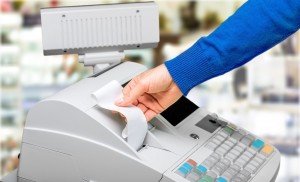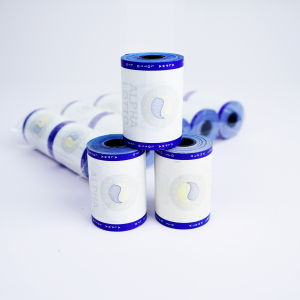As a business owner, one of the most important decisions you’ll make is choosing the right paper type for your POS system. The type of paper you use can have a significant impact on your business operations and customer satisfaction. If you’re not sure whether your POS system requires thermal paper or coated paper, this article will help you understand the differences between the two and how to determine which one is best for your needs.
Thermal paper and coated paper are two common paper types used in POS systems. They have different properties and are suitable for different applications. Understanding the differences between them will help you make informed decisions for your business.
Thermal paper is coated with special chemicals that change color when heated. This means it requires no ink or toner to print. Instead, it uses the POS printer’s heat to create images or text. Thermal paper is commonly used for receipts, tickets, labels and other applications where printing speed and ease of use are important. It is also known for producing high-quality, long-lasting prints.
Coated paper, on the other hand, also known as plain paper, is an uncoated paper that requires ink or toner for printing. It is more versatile and can be used for a wide range of printing applications, including POS receipts, reports, documents, and more. Coated paper is known for its durability and ability to withstand handling, making it a popular choice for businesses that require long-lasting documents.
Now that we understand the basic differences between thermal paper and coated paper, the next step is to determine which type of paper your POS system requires. Here are the key factors to consider:
1. Check printer specifications:
The first and most important step in determining whether your POS system requires thermal or coated paper is to check the specifications of your POS printer. Most printers will provide information about the paper types they are compatible with, including the size and type of paper, as well as any specific requirements such as roll diameter and thickness. This information can usually be found in the printer manual or on the manufacturer’s website.
2. Consider applying:
Consider the specific application in which you will use the paper. If you primarily need to print receipts, tickets, or labels, thermal paper may be a better choice due to its speed and ease of use. However, if you need to print documents, reports, or other types of paperwork, coated paper may be more suitable for your needs.
3. Evaluate printing quality:
Another important factor to consider is the print quality you require. Thermal paper is known for high-quality, long-lasting prints that are fade- and smudge-resistant. If print quality is a priority for your business, thermal paper may be a better choice. However, if you need color printing or a more detailed image, coated paper may be a better choice.
4. Consider environmental factors:
Environmental factors may also influence your decision. Thermal paper contains chemicals that are harmful to the environment, and there are concerns about the long-term effects of using thermal paper. Coated paper is generally considered more environmentally friendly and can be recycled, making it a better choice for businesses that prioritize sustainability.
In summary, determining whether your POS system requires thermal paper or coated paper requires careful consideration of your specific needs and the capabilities of your POS printer. By understanding the differences between these two types of paper and considering factors such as printer specifications, print quality, and environmental factors, you can make an informed decision that will benefit your business in the long run. Remember to also consider the cost of the paper, as well as the availability and convenience of the POS system to obtain it. With the right paper type, you can ensure efficient and effective printing for your business operations.
Post time: Jan-22-2024



